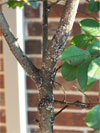Question and Answer – October 2008

Question: We have had a dwarf lime in a pot for the past year. The pot broke in the storm a couple of weeks ago. Can we plant it in the ground? B.A., Southlake.
Answer: Limes are absolutely not winter-hardy in Southlake or anywhere else in the northern 90 percent of Texas. Put it into a slightly larger pot and put it on a wheeled plant dolly so that you can bring it in and out of the house as the weather dictates. Do not expose it to temperatures lower than the mid-30s.
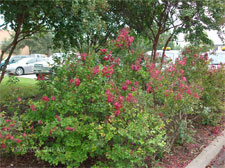
Question: I’m concerned that our dwarf crape myrtles might be getting too tall. However, a hard pruning might make them look terrible. What would you do? C.J., McKinney.
Answer: These do indeed fall into the group known as "dwarf" crape myrtles. Compared to standard types that can grow to 25 or 30 feet, I guess these are dwarfs, but they still can get really rangy. At the risk of having some critic try to hang me on my words about never "topping" any crape myrtle, I am going to say that dwarfs that outgrow their available space can be trimmed very drastically in mid-winter, much as we do butterfly bush (Buddleia). They will regrow vigorously next spring and bloom by late June. This treats them almost like perennials, but remember that this only applies to the true dwarf crape myrtles. It’s not a recommendation for any variety that you would expect to grow to more than 4 or 5 feet tall. Your only alternatives are to endure them the way they are or to do selective thinning and pruning to get them somewhat more compact. If you try the severe pruning and aren’t satisfied, you can always allow them to grow back.
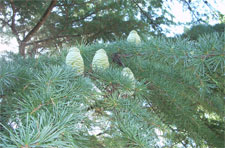
Question: This is the first year in which our deodar cedar has produced any cones. I’ve been told this could be an indication that the tree is dying. Is that accurate? B.F., McKinney.
Answer: I guess that might be true for some plants, but it certainly isn’t the case with the deodar cedar you’re showing. It looks like it’s doing terrifically. Enjoy your cones!
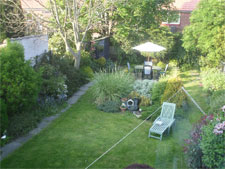
Question: What advice would you give someone from the Northwest portion of the UK who is relocating to Fort Worth? We have about 1.5 acres, and I’d like to have colour and scent if at all possible. I’ve been warned about the heat. D., coming to Fort Worth.
Answer: Welcome to Texas. However, be forewarned to leave all your gardening experiences behind you. It is, indeed, a lot different here. The heat warnings are in order. The list of plants you’ve known and loved will not play well in Fort Worth’s heat or alkaline soil. I did the opposite of what you’re doing, moving from my native home of College Station to central Ohio for college. I had run a backyard nursery in high school, and I knew Texas plants very well. However, precious few of the Ohio plants were familiar to me. It felt good to get back to my Texas landscaping roots a few years later. You’ll love Fort Worth, but promise yourself that you won’t anguish over those of your favorite plants that won’t survive here. Invest in Texas gardening reference books, and visit the Fort Worth Botanic Gardens, Dallas Arboretum and Chandor Gardens in Weatherford. Buy from Texas Master Certified Nursery Professionals, and ask their advice.
Dear Neil: What is this insect on my crape myrtle? We have a sticky residue on the leaves. D.S., Prosper.
Answer: This is azalea felt scale as it looks on crape myrtles. No one in the nation was aware of its being a problem with crape myrtles until it cropped up in the North Dallas/Collin County area last year following the prolonged June rains. Luckily, 2008 hasn’t been too bad. Pest outbreaks tend to rise and fall with the passing years. Black, sooty mold grows in the honeydew excreted by the insects. Apply either acephate or Merit systemic insecticide at first signs of it (if any) next year. Your plants will survive just fine. You’ll probably also see lady bugs feeding on the scale. If so, let them do their work, and hold off on the insecticide. It may not be needed.
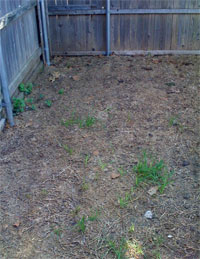
Question: This lawn was sodded with St. Augustine in May and fertilized in June. The area receives at most 5 hours of sunlight daily. Now, when it rains, it looks more like a mudhole. What can be done? No name given, Garland.
Answer: This is, without a doubt, the most-asked lawn question. St. Augustine is our most shade-tolerant lawngrass, but even it has to have 4 hours of hot, direct sunlight just to survive, 6 or 7 if you expect it to grow and thrive. If pets or children are involved, it needs still more. This looks like a dark corner that probably would be better suited to a groundcover such as mondograss, wintercreeper euonymus or liriope.
(Special Note to A.F. in Garland, who posed a similar problem, and who sent the photo below: the St. Augustine up around your trees’ trunks is having the same issues with excessive shade. It is not a result of the trees using too much water.)
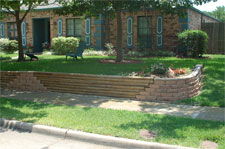
Question: What is causing these sores on my crape myrtle? I see ants. The large crape myrtle at the house behind me died, and I’m afraid the same thing might happen to my plant. What is this, and what should I do save it? S.H., no city given.
Answer: This is a really unusual problem, and I may not have a definitive answer. It looks like twigs may have been stripped away a year or two ago. Or, perhaps some type of insect with scraping mouthparts might have scored the branches. To my best eyesight from your photos, it looks like the plant is trying to heal itself, so just sit tight and see what transpires. Ants are not the cause, nor did they kill your neighbor’s plant. That could have been from the extreme drought of a couple of years ago, or it could also have been from damage done in the first week of December 2005, when temperatures in North Texas dropped suddenly and precipitously. We lost a lot of big crape myrtles in that unusual happening.
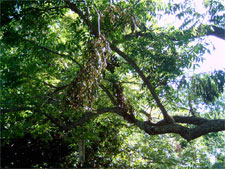
Question: Why are our pecan trees losing branches like this? We have no clue what may be wrong, as we have never had any problems with our pecans before except the occasional branch down in a storm, and sometimes webworms. We wondered about squirrels. We sure do love our big, old pecan trees, and don’t want to lose them! So, do we need to spray, prune, pray, or all three? S.C., West of Canton.
Answer: Your inclination was correct. This is damage done by squirrels, and it’s been widespread over much of Texas in 2008 – more so than I ever recall seeing. They’ve even riddled live oaks in the same way. The squirrel population this year is probably much larger due to the rain in 2007 and the resultant large pecan and acorn crop. They sharpen their teeth on branches, and a few months later the branches die. These branches will dry and fall to the ground in the next 3-12 months. In the meantime, don’t fret. Your trees will be fine.
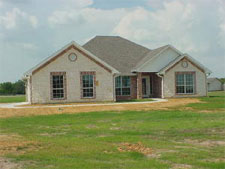
Question: We want to landscape the front of our home. Any ideas would be appreciated. Can we spray Round Up in the area between the house and the sidewalk? If we did this, how long would it be before we could plant anything in this area? Hope you can help. H.W., no city given.
Answer: If ever there were a need to know the city of origin for an e-mail, this would be it. The plants you would use in one part of this giant state would be vastly different from another part. Your best bet is to get with a Texas Master Certified Nursery Professional right away to plan your plantings. Developing a plan will take several hours, but it will be the roadmap to your success. If you can get things planted this fall, you’ll be a giant stride ahead. Plants bought in fall are usually larger, plus they’re often marked down as the season plays out. Fall planting lets them have 9 months to get their new roots established prior to summer. Relative to the use of Round Up now, yes, you can do so. Round Up and the other glyphosate weedkillers need a couple of weeks to kill existing vegetation. They do not contaminate the soil, so you can replant once the grasses and weeds have died.

